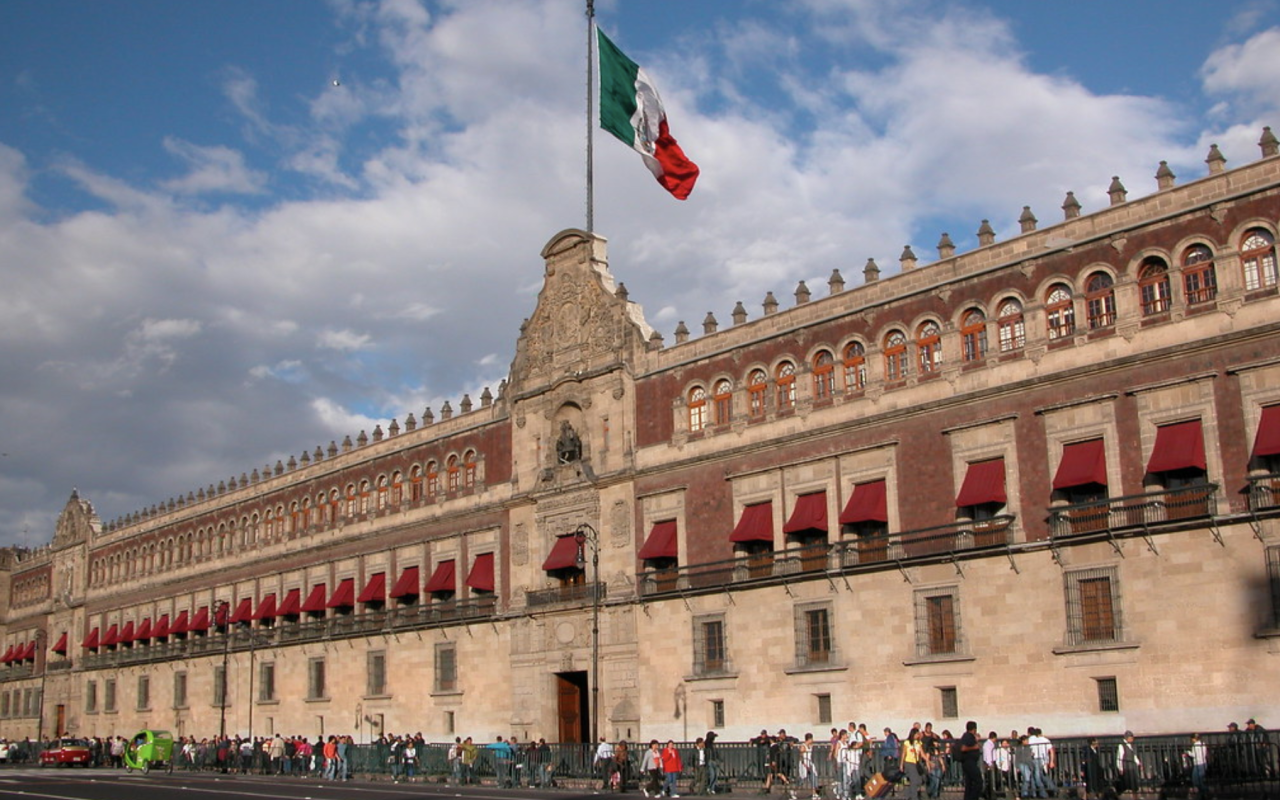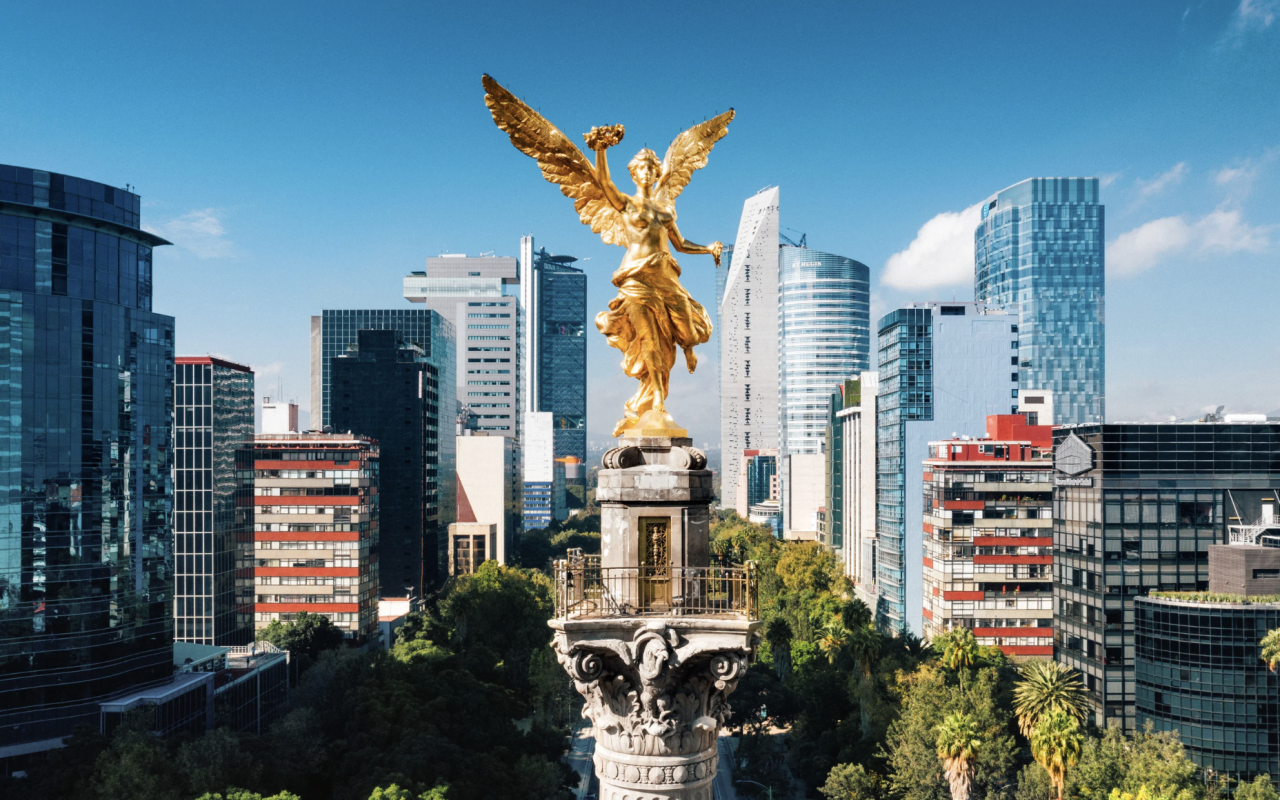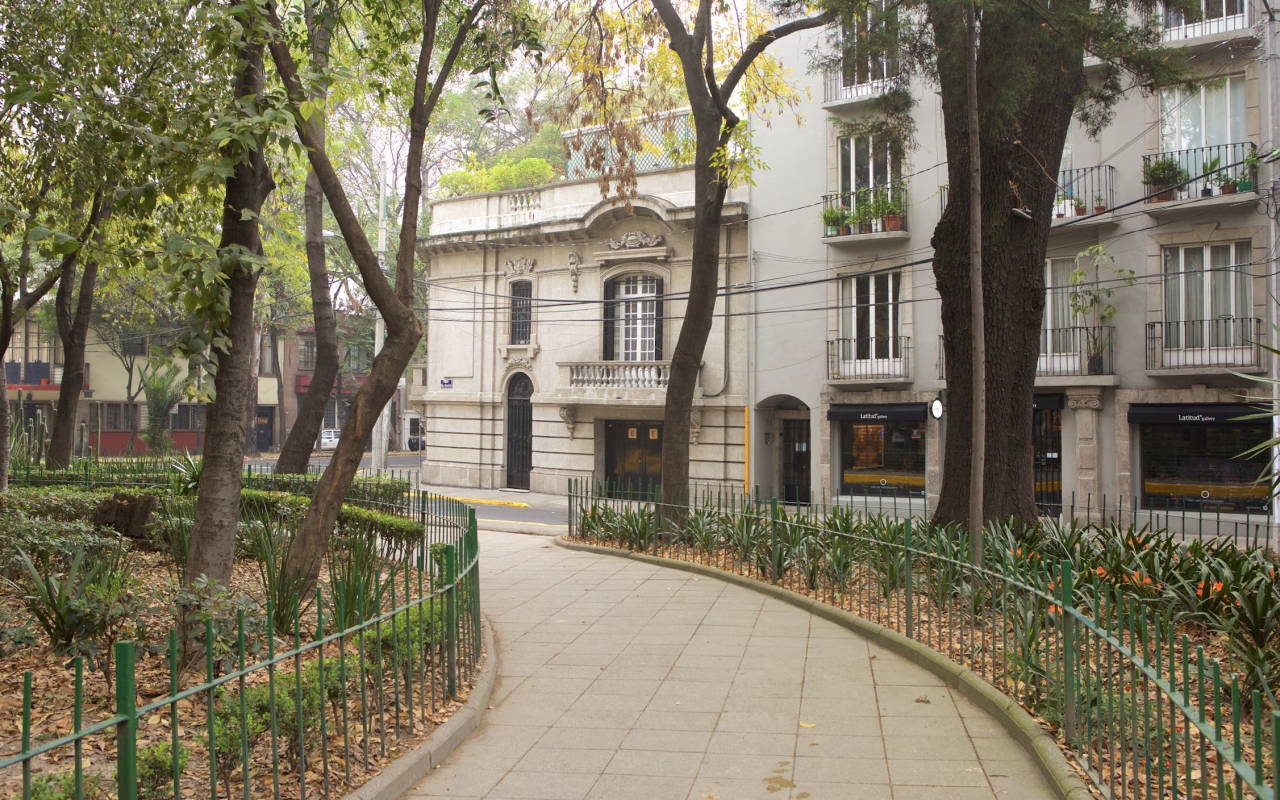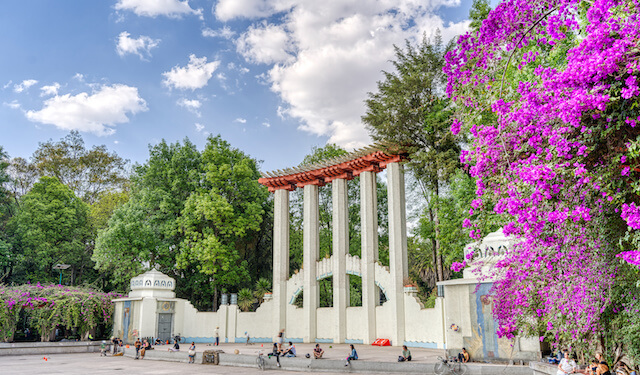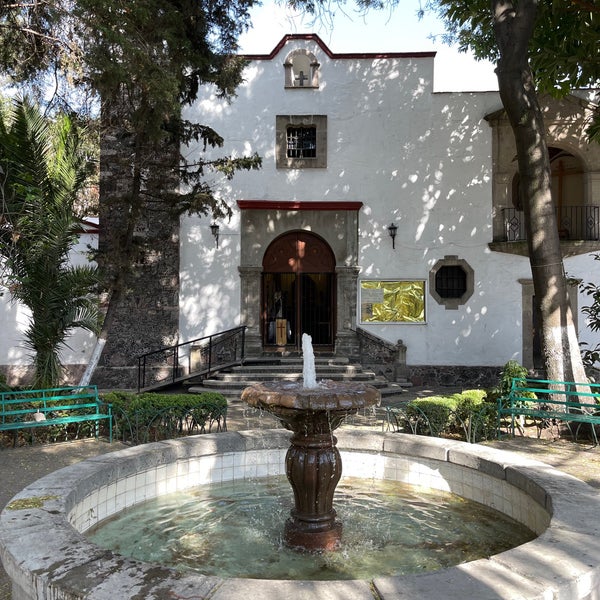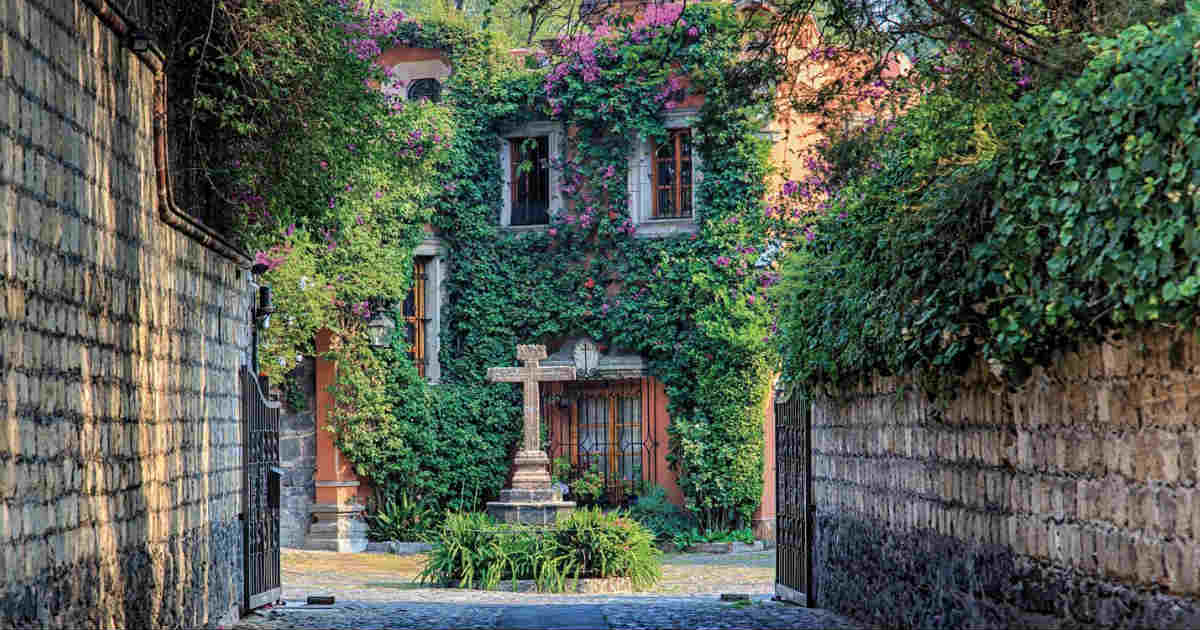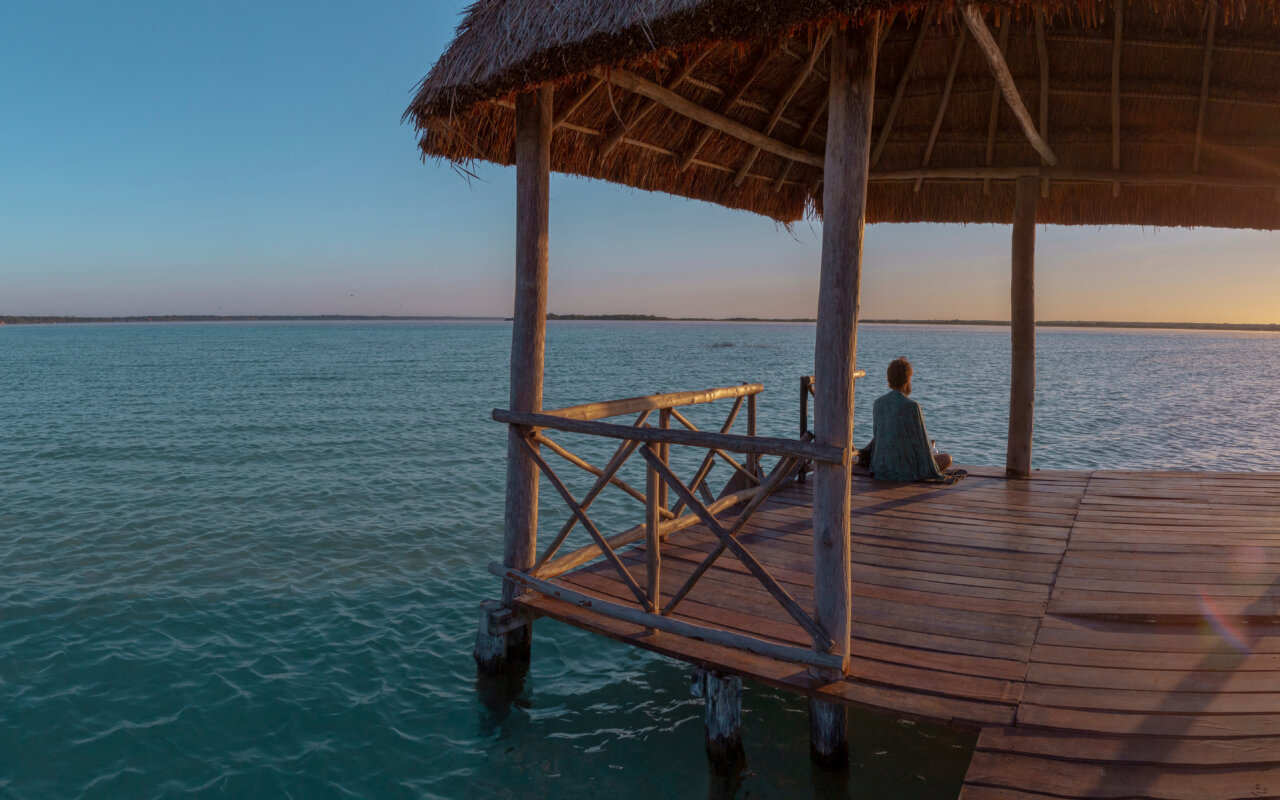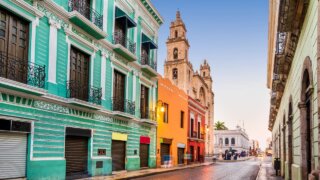Mexico City, or CDMX, is a place where history and culture come alive through its architecture and traditions.
In the 14th century, the Aztecs founded Tenochtitlán, a prosperous city built on an island in a lake. Later, in the 16th century, Spanish conquistadors transformed the city into the center of the viceroyalty of New Spain. This fusion of cultures left an indelible mark on architecture and daily life.
A Synthetic History of Mexico City
Aztec Foundation: Tenochtitlan (1325-1521)
The Mexica (Aztec) people founded Tenochtitlan in 1325 on an island in Lake Texcoco, following their prophecy to build where they saw an eagle perched on a cactus eating a serpent. The city became the capital of the Aztec Empire, featuring advanced engineering with chinampas (floating gardens), canals, and causeways connecting to the mainland. By 1519, Tenochtitlan housed approximately 200,000-300,000 inhabitants, making it one of the world’s largest cities at the time.
Spanish Conquest and Colonial Transformation (1521-1821)
Hernán Cortés conquered Tenochtitlan in 1521 after a brutal siege, systematically destroying Aztec temples and buildings. The Spanish built their colonial city directly over the Aztec ruins, using stones from demolished temples for churches and government buildings. They drained Lake Texcoco to expand the city, fundamentally altering the region’s ecology. Mexico City became the capital of the Viceroyalty of New Spain, serving as the administrative center for Spanish territories from California to Panama.
Independence and Early Republic (1821-1876)
Mexico gained independence in 1821, with Mexico City becoming the capital of the new nation. The city endured political instability, including the Mexican-American War (1846-1848) when U.S. forces occupied it for nearly a year. Emperor Maximilian I briefly ruled from the city (1864-1867) during the French intervention before being overthrown and executed by republican forces under Benito Juárez.
Porfiriato and Modernization (1876-1911)
Under Porfirio Díaz’s dictatorship, Mexico City underwent massive modernization inspired by European cities, particularly Paris. The government constructed grand avenues like Paseo de la Reforma, installed electric lighting, built the Palace of Fine Arts, and expanded the railway network. The city’s population grew from 200,000 to over 470,000 during this period, though benefits primarily reached the wealthy elite.
Revolution and Post-Revolutionary Growth (1910-1940)
The Mexican Revolution (1910-1920) brought political upheaval but less physical destruction to the capital compared to rural areas. Post-revolutionary governments promoted nationalistic art and culture, commissioning famous muralists like Diego Rivera, José Clemente Orozco, and David Alfaro Siqueiros to decorate public buildings. The city began expanding beyond its colonial boundaries as rural migrants arrived seeking opportunities.
Mid-20th Century Boom (1940-1980)
Mexico City experienced explosive growth during the “Mexican Miracle” economic boom. The 1968 Summer Olympics showcased the city internationally, though student protests before the games ended in the Tlatelolco Massacre. The population exploded from 1.6 million in 1940 to over 8 million by 1980, creating vast informal settlements on the periphery. The city became Mexico’s undisputed economic and cultural center.
Modern Challenges and Urban Sprawl (1980-Present)
The 1985 earthquake killed thousands and revealed corruption in building standards, spurring civic activism and political reform. The city’s population peaked at around 9 million in the Federal District, while the greater metropolitan area now houses over 22 million people, making it one of the world’s largest urban agglomerations. Environmental challenges include air pollution, water scarcity, and subsidence from groundwater extraction. Since 2000, the city has implemented successful reforms including bike-sharing programs, Bus Rapid Transit, and the transformation from Federal District to Mexico City with greater autonomy in 2016.
Monuments of Mexico City
Templo Mayor
At the very heart of the city stands the majestic Templo Mayor, itself an archaeological site. Before colonization, it housed a temple that served as the ceremonial center of the ancient Mexican city of Tenochtitlan. The adjacent museum exhibits a vast collection of archaeological artefacts recovered during excavations.
Leaving the Templo Mayor, look out over the majestic Palacio Nacional, witness to countless historic moments. Its walls house murals by Diego Rivera, telling the story of Mexico from Antiquity to the Mexican Revolution.
Angel de la Independencia
Continuing along Reforma Avenue, we come across an emblematic monument, the imposing Angel de la Independencia. It was inaugurated in 1910 to commemorate the centenary of Mexican independence.
Chapultepec Castle
Nearby, at the heart of the Chapultepec forest, stands the majestic Chapultepec Castle. This royal palace has witnessed the history of Mexico, from the time of the Aztecs to today’s presidential residence. The museum houses a vast collection of works of art, historical objects and documents that tell the country’s story.
Xochimilco
Another unique experience awaits you in Xochimilco, where you can cruise the canals in the colorful trajineras. Xochimilco has received national and international recognition. In 1987, it was listed as a UNESCO World Heritage Site for its cultural value and its unique system of chinampas, which represent a form of sustainable agriculture and a model of harmonious coexistence between man and nature.
Neighborhoods to visit durng your stay in Mexico City
Other neighborhoods worth the visit are neighborhoods such as La Condesa, Coyoacán, La Roma and, of course, San Ángel.
La Condesa
La Condesa stands out for the impressive cultural growth that has transformed the area into a paradise for art and history lovers.
Walking through La Condesa under the jacarandas becomes an experience where elegant colonial architecture blends with contemporary art. You can explore Parque España or Parque México, bookshops, cafés, restaurants, art galleries, cultural life and nightlife.
La Roma
The next stop should be La Roma. This is a district where you can still find traditional establishments such as old bookshops, vinyl stores and theaters inside beautiful old buildings. It’s notable for its interesting examples of art nouveau architecture.
Roma is also a landmark colony in Mexican cinema, where films such as Alfonso Cuarón’s ¨ROMA¨ have been shot. During your visit, don’t miss the micro-neighborhood known as La Romita, with its village atmosphere, where the 17th-century temple of Santa María de la Natividad or San Francisco Javier stands out.
Coyoacan
Coyoacán is one of Mexico City’s oldest and most culturally rich neighborhoods. It retains a neo-colonial charm that has attracted several generations of Mexican and foreign intellectuals, including such iconic figures as Octavio Paz, Salvador Novo, Diego Rivera, Frida Kahlo and Leon Trotsky.
Coyoacán is known as the “cultural heart of Mexico” and has been the setting for many internationally acclaimed films and novels.
Not-to-be-missed cultural experiences in Coyoacán include: Fonoteca Nacional, Museo Frida Kahlo, Casa Azul, Museo Diego Rivera Anahuacalli, Casa de León Trotsky, among others.
San Angel District
Finally, we arrive in San Angel, a district that is a living example of tradition and culture around every corner. This former colonial town has become a culturally diverse and exciting space.
Cobblestone streets, romantic parks and old colonial mansions add to the charm of the cafés and restaurants in the colonial district of San Angel, one of the most beautiful neighborhoods in southern Mexico City,” is how National Geographic Traveler magazine describes San Angel. In 2010, it was named one of Mexico City’s tangible and intangible cultural heritage sites.
Palacio de Bellas Artes
Continuing your tour of the city, you’ll find the Palacio de Bellas Artes, a masterpiece housing the finest works of Mexican art and culture. This neoclassical building is also home to the National Symphony Orchestra of Mexico. The Palacio de Bellas Artes has received recognition and awards in a variety of fields. In 1987, like Xochimilco, it was declared a World Heritage Site by UNESCO.
Plaza Garibaldi
As night falls, the city comes alive in Plaza Garibaldi, where mariachi sing their songs, filling the air with Mexican rhythms and infectious energy. Music, dance and laughter intertwine in this unique experience.
In conclusion, Mexico City is a destination that invites you to immerse yourself in history, appreciate its rich culture and revel in its unique flavors. This is why it has been recognized by UNESCO for its historical and cultural value. It is home to over 150 museums, more than even cities like Paris and London. It’s a complete experience that will leave you with unforgettable memories and a deep appreciation of Mexican authenticity. Get ready to experience Mexico City!


